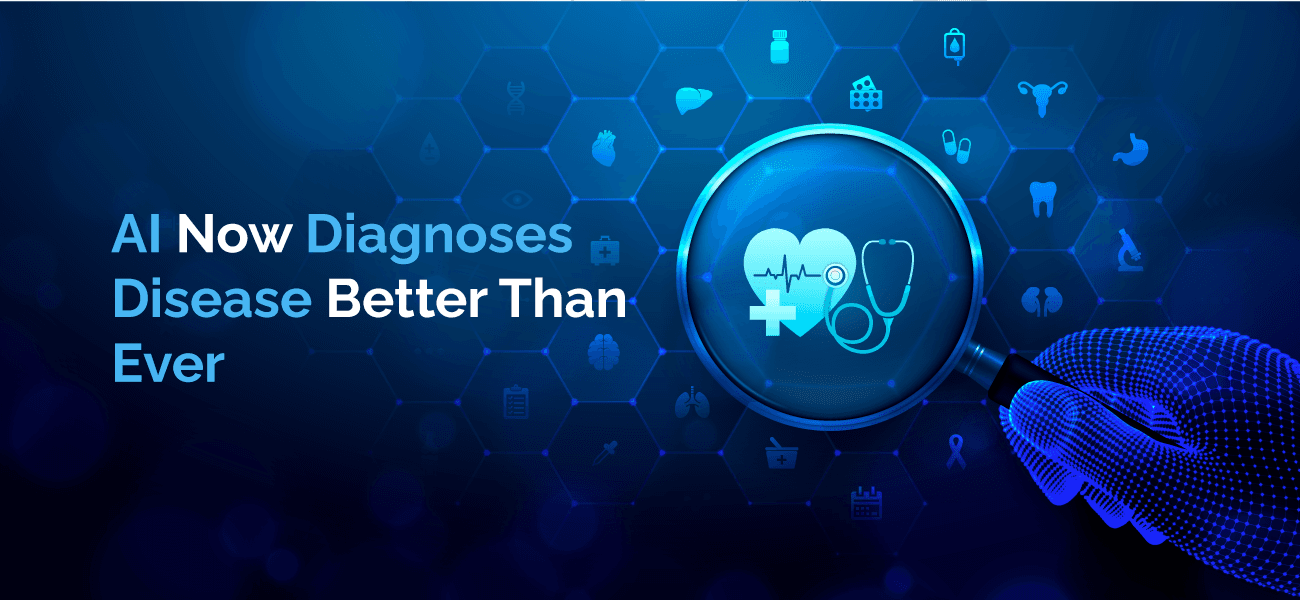
Posted on: June 3, 2021
AI Now Diagnoses Disease Better Than Ever
The World Health Organization (WHO) cautioned that doctors’ missteps endanger more than 138 million patients per year, only days before the first World Patient Safety Day, which aims to raise awareness of this continuous crisis. According to WHO the primary reasons for so many people being affected are complications in pharmaceutical prescriptions and treatments, and inappropriate medication consumption. While recognizing that several healthcare facilities suppress what went wrong, the expert mentioned that “These mistakes occur because healthcare systems are not suitably designed to deal with these errors and learn from them,”. As a result, it prevents them from taking efforts to ensure that similar errors do not eventuate further. These mistakes can include using medicines in such a manner they were not even intended for, making errors in X- rays and blood transfusions, or, in more serious circumstances, advising that the wrong limb must be dismembered or that the wrong segment of the brain needs surgery. It is mentioned by a Geneva-based institution that the handiest inaccuracies associated with erroneous pharmaceutical prescriptions cost healthcare systems $42 billion, across the world.
How AI Technologies Accelerate Progress in Medical Diagnosis?
AI will gradually be included in the clinical domain, as per the Future Healthcare Journal, notably for activities such as diagnostic and therapeutic recommendations, patient involvement and adherence, and organizational responsibilities of the healthcare professionals.
The use of neural networks in clinical diagnosis to detect cancer is a prominent AI breakthrough in healthcare. As shown in a new report in the journal of the National Cancer Institute, The Artificial intelligence can diagnose breast cancer with almost the same precision as a conventional breast radiologist. Moreover,95 percent confidence intervals have been achieved by both radiologists and the AI system. Since AI models can continuously train themselves, there’s a significant chance that their productivity will improve dramatically in the coming years.
The expeditious growth of the global medical imaging industry over the past years has significantly attracted investors and technicians to use AI solutions in medical imaging worldwide, resulting in an expected production value worth USD 4,720.6 Million by 2027. By analyzing the dynamics of international investment in the field of AI-powered healthcare facilities, it has become evident that the integration of artificial intelligence in the medical image analysis will drive the market demand, especially during the post-pandemic era.
2 ways how AI can improve diagnostics accuracy
- Detecting diseases
The application of artificial intelligence to medical diagnosis has various advantages for the healthcare industry’s evolution. Google has tested that a neural network may be trained to discover symptoms of lung most cancers in advance and quicker than skilled radiologists from their new research. Artificial intelligence solutions can discover whether an affected person has an infection even earlier than signs and symptoms arise. However, this program still needs to be evaluated on a bigger audience and put through additional testing as the concept of employing AI to detect cancer at an early stage is gaining traction.
- Classifying diseases
Deep learning technology can examine images and find patterns brings up the possibility of developing algorithms to aid doctors in diagnosing diseases more quickly and precisely. Furthermore, such algorithms can learn over time, boosting their accuracy at guessing the correct diagnosis. In clinical imaging such as MRIs, x-rays, and CT scans, AI-driven software can be taught to properly recognize indications of a certain disease. Similar technologies that process pictures of skin lesions already utilize AI for cancer diagnosis. Specialists can more correctly identify patients and give the best medication using such instruments.
Although we just began to discover confidence in AI-based clinical solutions with respect to technical capabilities, AI for medical imaging is at a critical juncture. It is beyond doubt that crucial enhancements are needed prior to more robust implementation. Yet there are excellent prospects to harness artificial intelligence by assimilating proper initiatives to address the developing demands.
Are you interested in integrating our AI solution to enhance your business success?
Please email us in case you are interested to hear more about us.




